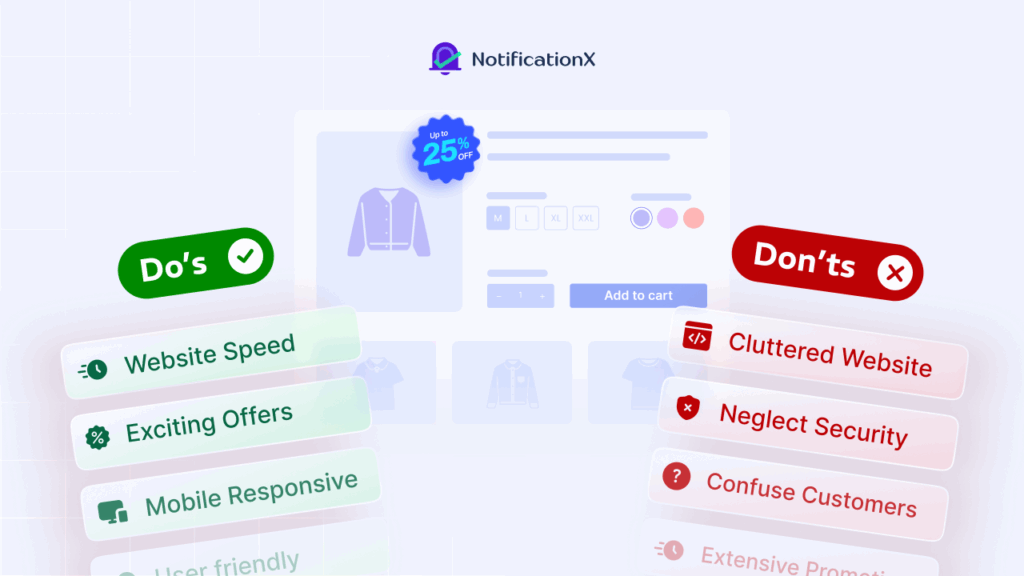No doubt that digital marketing is undergoing rapid evolution, and to cope with that, automation tools are essential for scaling operations and improving engagement. Despite this, marketers often make common marketing automation mistakes that undermine their campaigns’ effectiveness. It can be helpful if you know how to avoid these mistakes if you are new to this process or want to optimize your existing strategy.

In this blog, we will discuss the most common mistakes marketers make while creating an automated marketing strategy, as well as how to avoid them to ensure you are being effective and streamlined.
1. Conducting Insufficient Market Research
Not doing marketing research properly is one of the core & major issues behind marketing automation mistakes. An understanding of your audience is the first step to effective marketing automation. Incomplete or skipped market research leads to mistakes in automated marketing, which in turn affects campaign effectiveness.
Understanding Market Research Mistakes in Automation
When data is not accurate, automation can generate irrelevant content and communications. It is common for many marketers to make some mistakes, such as using outdated data, incorrect segmentation, and not taking into account changes in customer preferences over time. The following examples of market research mistakes can dramatically reduce engagement and impact your campaign’s success.
How to Avoid Market Research Mistakes?
- Regularly survey your customers: You can keep your data fresh by engaging your audience with surveys and polls. You can collect these surveys through email, social media or from different communities.
- Analyze predictive data: Utilize machine learning and AI to better understand future trends and behaviors.
- Identify and update buyer personas: Regularly update and refine your personas to stay aligned with audience changes.
2. Losing the Human Touch Due to Over-automation
Marketers can scale operations with automation, but maintaining human engagement is crucial. Automating too much can harm customer relationships.
Why Over-Automating Can Backfire?
The over-automation in customer interactions, such as emails or chat responses, can result in robotic and impersonal communications. Email marketing mistakes can be particularly problematic, as sending robotic replies can alienate subscribers.
How to Maintain Personalization During Automation?
- Put dynamic content to use: Based on user behavior, customize your email content or product recommendations.
- Create triggers for follow-ups: During the early stages of the customer journey, automate, but at critical points, intervene personally.
- Make two-way communication a priority: Give customers the option of responding to emails and engaging directly with your employees.
- Train Chatbot: For customer support, train your chatbot in such a way that it does not sound robotic while interacting or solving common queries. It is better to keep an option to talk with a human, so that customers get a personal touch with the employees.
3. Overlooking Campaign Testing & Optimization

To improve the performance of automated marketing, you need to test and optimize. If you fail to assess what works and what does not, you will make mistakes in digital marketing that are easily avoidable. Overlooking testing and optimization is one of the most common marketing automation mistakes.
Marketing Automation Testing: Why Is It Important?
Unless you conduct A/B tests, you will not know which messages resonate with your audience. Investing in tests can help you avoid email marketing, affiliate marketing, and other mistakes that can lead to wasted resources.
What Is the Best Way to Implement Effective Testing?
- CTAs and subject lines should be tested: You should A/B test your subject lines, call-to-action buttons, and content formats to ensure they are effective.
- Optimize the timing: Understand what time and day your audience is most responsive by testing different sending times and days.
- Try experimenting with design: To see what works best, experiment with different layouts, fonts, and images.
4. Segmenting the Audience Inadequately
The mistake of automating marketing campaigns without segmentation is a common marketing automation mistake. A generic message sent to each and every audience results in poor engagement and can even result in unsubscribes.
Segmentation in Automation: Why It Matters?
Segmenting your audiences by behaviors, interests, and demographics allows you to tailor your message to different groups. Marketers often fail to do this, resulting in poor results from marketing automation.
What You Need to Know About Segmenting Your Audiences?
- Segmentation by lifecycle stage: Determine where customers are in the buyer’s journey and group them accordingly.
- Take advantage of behavioral data: Make personal content recommendations based on users’ clicks, purchases, and website visits.
- Send customized messages: Make your messages relevant to different demographics, interests, and previous engagements.
5. Connecting Systems without Full Integration
The lack of integration between marketing automation tools and existing software leads to inefficiencies and missed optimization opportunities.
Integration Pitfalls
Marketing automation software that does not sync with CRMs, analytics platforms, or customer service software will lead to inconsistent campaigns. Poor integration can cause duplicate messages, missed interactions, and untrackable performance.
How to Ensure Proper Integration?
- Integrate platforms that are easy to use: Ensure that the tools you choose integrate seamlessly with your existing technology stack.
- Data synchronization: Real-time data sharing should be a priority between your CRM, email platform, and analytics platform.
- Sync data automatically: Keep your systems updated regularly and make sure they work together to provide accurate information.
6. Analyzing the Reason Behind Campaign Failure
Without regular analysis of the campaign performance, even the best marketing automation tools will fall short. The most common marketing mistake is failing to review automated campaigns and make the necessary adjustments.

Analyzing Performance – Why It Is Important?
It is impossible to improve without analysis. The results of automated campaigns may look great on paper, but it is impossible to know whether they are achieving your goals without insight into their performance. Maintaining a regular monitoring schedule will help you make informed decisions based on your data.
Tracking Key Marketing Automation Metrics
- Open rates: Measure the effectiveness of your subject lines by tracking how many recipients open them.
- Click-through rates: Get a sense of how many people are engaging with your content by clicking on your call-to-action.
- Conversion rates: Identify the business goals you are trying to achieve with your automated campaigns.
- Engagement metrics: Check in with your audience to see how they respond to your content (comments, shares, etc.)
7. Sending Too Many Emails to Subscribers
You can be sure that an overloaded inbox will annoy your audience and make them unsubscribe. If you send too many emails, especially automated ones, you can reduce engagement and damage your brand’s reputation.
How Too Many Emails Affect Campaign Performance?
It is okay if you send automated emails to your audience to stay in touch. However, too many messages can lead to a high unsubscribe rate.
Frequency Guidelines for Email Marketing
- Make sure your email timing is clear: Decide what frequency to send your emails based on the preferences of your audience.
- Capping frequencies is useful: A subscriber may receive an email only a certain number of times within a given time frame.
- Let the subscriber take control: Make it easy for your audience to choose how often they would like to hear from you.
8. Concentrating Solely on One Channel
Avoid focusing solely on one channel for automation when it comes to digital marketing. Customers engage across multiple platforms, which makes an omnichannel approach crucial for marketing success.
Omnichannel Marketing Automation: Why It Matters?

Automation of email campaigns only leaves you missing out on many valuable opportunities in other channels, such as social media, SMS, or blog writing. It also leads to missing the opportunity to get in touch with target audiences who use other channels.
Omnichannel Automation: How to Create One?
- Multichannel integration: Create a seamless customer experience by automating social media posts, email campaigns, and SMS.
- Channel-specific personalization: You should ensure consistency and personalization across email, web, and social media channels.
- Cross-channel campaigns: Your audience will be more likely to hear what you have to say if you use cross-channel tactics.
9. Setting Unclear Marketing Automation Goals
Unless automation efforts have clear goals, they can quickly become directionless and ineffective. Tracking success and making informed strategy decisions are possible when you set measurable goals.
Automated Marketing Goals: Why They Are Important
It is common for marketers to make mistakes when their goals are unclear. Lack of clear KPIs can lead to poor results and a waste of resources when running campaigns. The success of your automation efforts will be hard to gauge if it is not aligned with your business objectives.
How to Set Effective Automation Goals?
- Ensure alignment with overall business goals: Take steps to ensure that the marketing automation efforts you implement are aligned with your company’s broader objectives.
- Set SMART goals: You should set specific, measurable, attainable, relevant, and time-bound goals.
- Regularly track KPIs: Maintain a close eye on your progress toward your goals and adjust your strategy if necessary.
10. Neglecting Mobile Optimization
One of the most common marketing automation mistakes is not optimizing campaigns for mobile devices. Mobile-friendly emails, social media posts, and landing pages are increasingly important with the widespread use of smartphones.
Why Optimizing for Mobile Devices is Crucial?
Users can experience poor user experiences if mobile optimization is not done. Due to the high number of people who access emails and websites on mobile devices. A non-optimized campaign may result in low engagement, high bounce rates and ultimately, lower conversion rates.
Optimizing Your Mobile Website for Best Results
- Design responsively: A good email and landing page should adapt to various screen sizes.
- Speed up the loading process: It is expected that mobile users will receive content that loads quickly. Optimize the loading time of images and code by compressing and streamlining them.
- Conduct a test across multiple devices: Be sure to test your campaigns on a variety of mobile devices regularly in order to ensure optimal performance.
Avoid Marketing Automation Mistakes & Optimize Your Strategy Effectively
Indeed, marketing automation can dramatically increase efficiency and scale operations, but not without any challenges. In order to achieve effective, efficient, and impactful marketing automation strategies, marketers should avoid these common automation mistakes. Plus, need to conduct regular analysis, tests, and refinements.
Do not think that automating marketing strategies means replacing humans—it is about enhancing the customer experience while reducing repetitive tasks. Optimizing your automation strategy will help you connect with your audience better, build stronger relationships, and achieve better marketing results.
Hope it was helpful for you! Subscribe to our blogs and join our Facebook community to stay updated with the latest news and trends. All the best!




